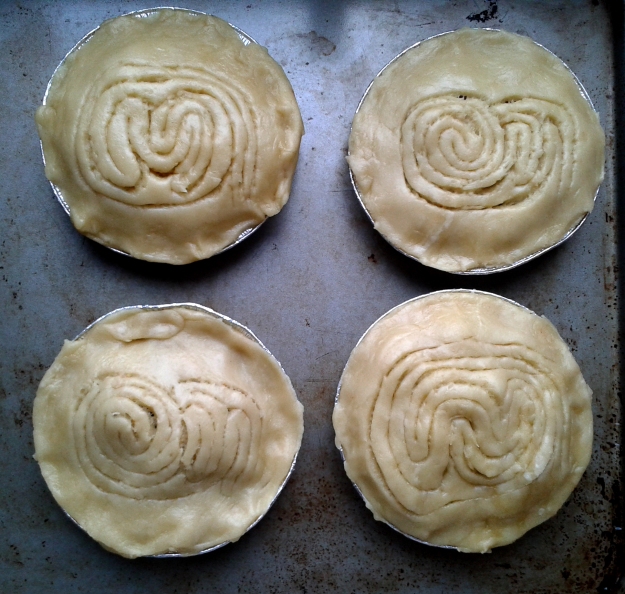
This year I have been making pastry interpretations of ancient divination models using shortbread biscuit dough, and rough, puff and hot water crust pastry, for the lids of pies with various fillings.
Whilst visiting the Vorderasiatische Museum in Berlin in February, I came across a clay tablet from Babylon from the 12th-11th century BC, with multiple representations of extispicy models. In order to understand these images, I have been incising the forms onto the lids of the small pies. The original tablet contains 14 diagrams, some whole, some fragmentary, which represent the various configurations of the entrails of sacrificial sheep, and what they might mean to diviners.[1]
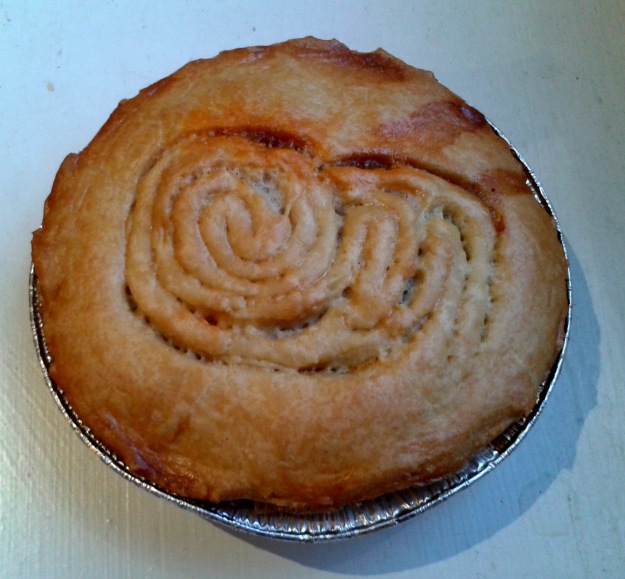
Examples of these models were also incised into the lids of the Andouilette pies, which were served as part of the ‘Intestines’ course of my recent Reflection on Digestion performance dinner at LIBRARY London. In the chapter, I was connecting the intestines to the labyrinth, the labyrinth to the library, informed by literary examples such as the Medieval monastic labyrinthine library of Eco’s The Name of the Rose, and the absurd universal library of Borges’ Library of Babel. I liked the idea that my participants were breaking open the pies, disembowelling the intestines of the Andouilette sausage within, and then ingesting both the actual innards and the ancient representation of them. As Murakami’s Oshima instructs Kafka, in his novel, Kafka on the Shore, my participants too might be able to perceive their insides within, and thereby conceptually and visually (re)-connecting the idea of the digestive system being at the same time inside the body, and part of the external environment, outside the body border.
‘It was the ancient Mesopotamians. They pulled out animal intestines… and used the shape to predict the future…So the prototype for labyrinths is, in a word, guts. Which means that the principle for the labyrinth is inside you. And that correlates to the labyrinth outside…. Things that are outside you are a projection of what’s inside you, and what’s inside you is a projection of what’s outside…’[2]
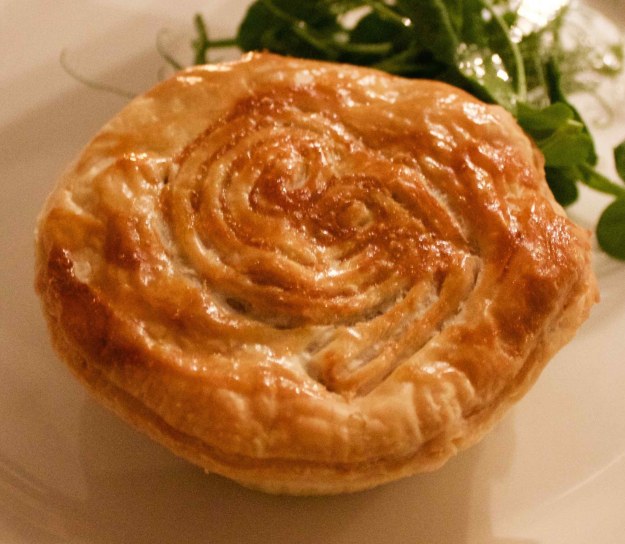
A larger pie lid’s inscription refers to the 11th century BC Mesopotamian clay tablet representing the bowels of a sheep, which I found in the Louvre in January. It is a similar model to the Berlin forms, but which appears to be a single image on the tablet.
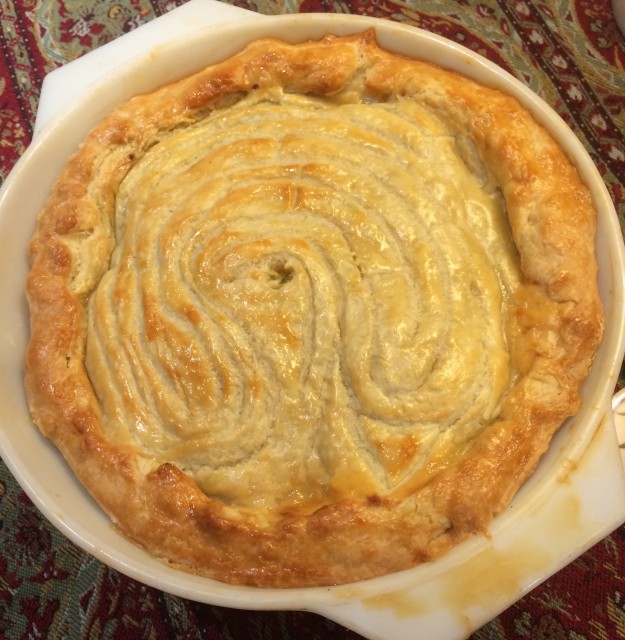
Another larger pie lid refers to the divination model from the Old Babylonian period, 18th-16th century BC, housed in the British Museum, which portrays the demon Huwawa’s face as coiled intestines. Huwawa or Humbaba was the guardian of the cedar forest in the Epic of Gilgamesh. The inscription on the reverse of the object reveals an omen that if entrails were encountered that look like this model, it would mean ‘revolution’. This example is not a representation of actual entrails, but rather more metaphorical.
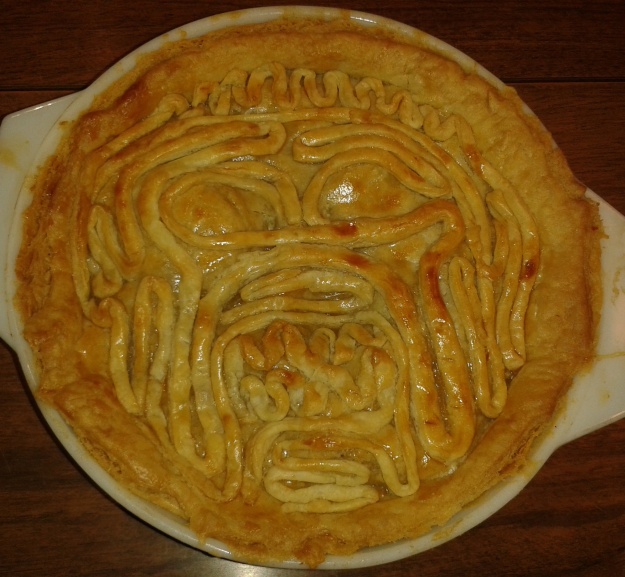
A form of visual research, these biscuits were made in the Louvre galleries whilst observing the liver models on display from the palace of Mari (19th-18th century BC), and the 11th century BC divinatory tablet of sheep guts.
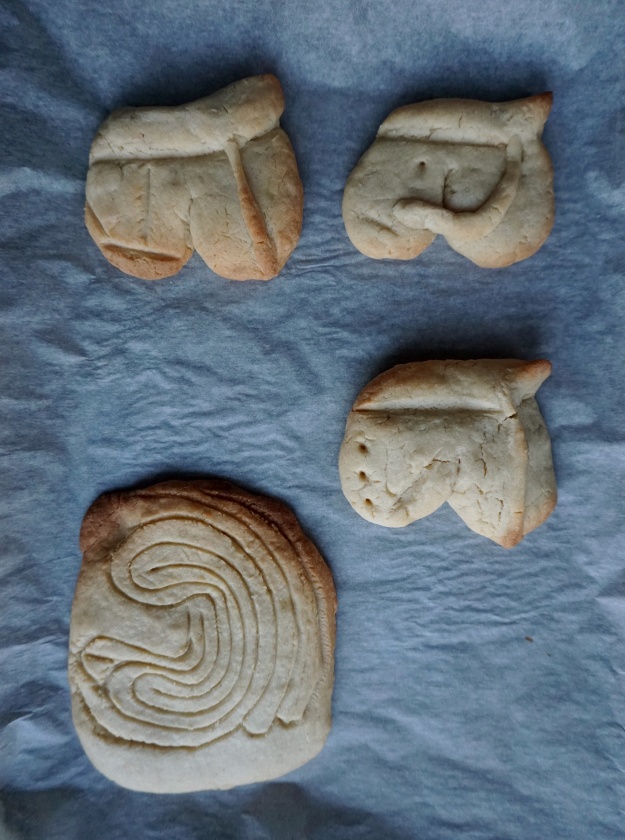
There is a certain kind of excitement by taking unconventional materials into museums to sculpt rather than draw from the collections. The clay tablets and models from ancient Mesopotamia lend themselves to being learnt from, translated and transformed through another form of clay, or Greek –gloios- meaning ‘sticky matter’. In much the same way the diviners may have formed the original models translating the actual blemishes and marks on the sheep livers into their clay, I, too, am learning through the forming of paste, what these divining models may have felt like in the hand, and how they may have been formed, incised, and pierced.
There are a few examples in extispicy reports of the ‘baking’ of the results of a divination, which is thought could refer to the preserving of the models. For example, in a letter to the king of Mari the diviner Erib-Sin wrote, ‘I baked […] those extispicies and sealed them in a box and sent (it) to my lord’.[3]
The idea one might get caught ‘playing’ with foodstuffs in a museum is also exciting. There is a subversion, a resistance in this kind of irreverent intervention into such institutions. So often in museums, history is held in such high regard through the preservation of the objects, and their inevitable separation from us, and as a result it can sometimes seem as if history is perceived much more of a thing that is to be conserved and protected, rather than a process or a conversation, that is being created by our interaction and dialogue with it.[4]
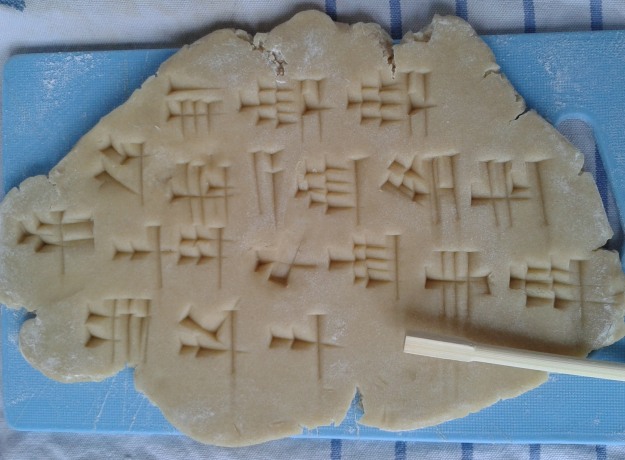
At the beginning of this academic year, we took first year Fine Art students on a study trip to kickstart their practice. My workshop, not surprisingly was based in the Mesopotamian Rooms 55 & 56. I got them to copy cuneiform texts on to biscuit dough, sugar-plate or blue-tac ‘tablets’, as a ancient scribe would have done by imprinting into fresh clay, as well as engaging in ekphrastic writing, attempting to observe through words their chosen objects in the collection. This they did by sending tweets, touching the screens on their smartphones and tablets, imitating the early process of writing as a imprinting or pressing into a responsive surface, rather than an inscription of line or the trace of a pen on paper, the action of writing has come full circle.

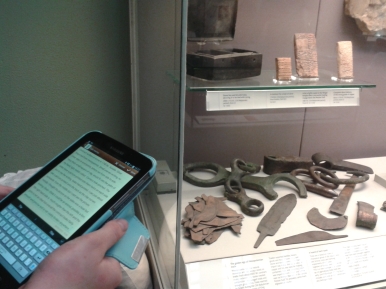
Footnotes:
[1] Richard Myers Shelton, ‘The Babylonian Labyrinths’ Caerdroia 42, (2013), 7-29 (p. 11).
[2] Murakami Haruki, Kafka on the Shore. (London: Vintage, 2005) p. 379.
[3] See Wolfgang Heimpel, Letters to the King of Mari. Mesopotamian Civilizations Vol. 12. (Eisenbrauns: Winona Lake, Indiana, 2003), p. 213-14, cited in Matthew T. Rutz, ‘The Archaeology of Mesopotamian Extispicy: Modeling Divination in the Old Babylonian Period’, in Matthew T. Rutz and Morag M. Kersel, eds, Archaeologies of Text: Archaeology, Technology, and Ethics (Oxford and Philadelphia: Oxbow, 2014), 97-120, (p. 102).
[4] See Diane Borsato’s performance, intervention and photographs at the museum of Saint Hyacinthe, Québec, Artifacts in my Mouth, 2003 as an example of a radical engagement with historical artefacts. http://dianeborsato.net/projects/artifacts-in-my-mouth/

Reblogged this on Kitchen Counter Culture and commented:
I’ve just come across the incredibly interesting art practice of Amanda Crouch who works in animal innards, pastry, divination and performance. At the recent Oxford Symposium on Food and Cooking she enacted” a divination ritual based on ancient Mesopotamian and Greek extispicy methods” enquiring “Will the UK would invoke article 50?” (http://www.amandacouch.co.uk/#/news/4589422754) The answer was no!
I am so looking forward to learning more about her work, thus sharing one post here from her blog as a link to much more.
Amazing stuff, thanks for this fascinating article!